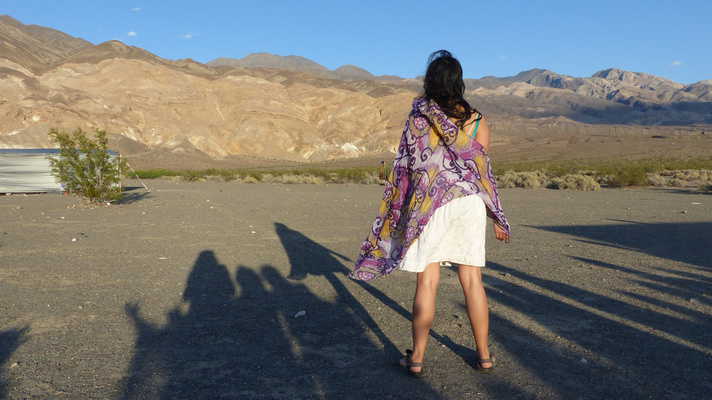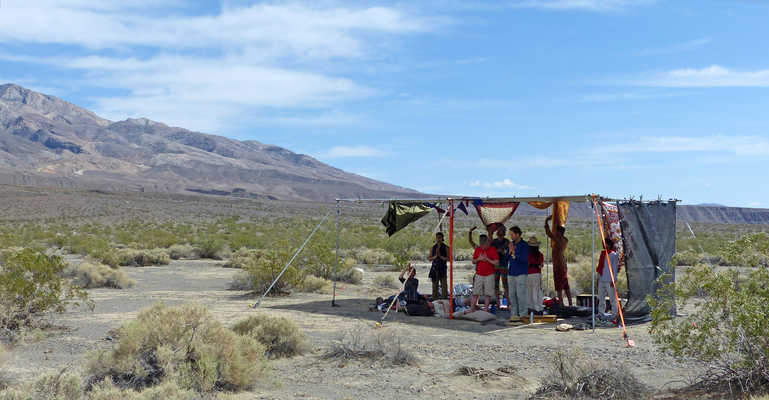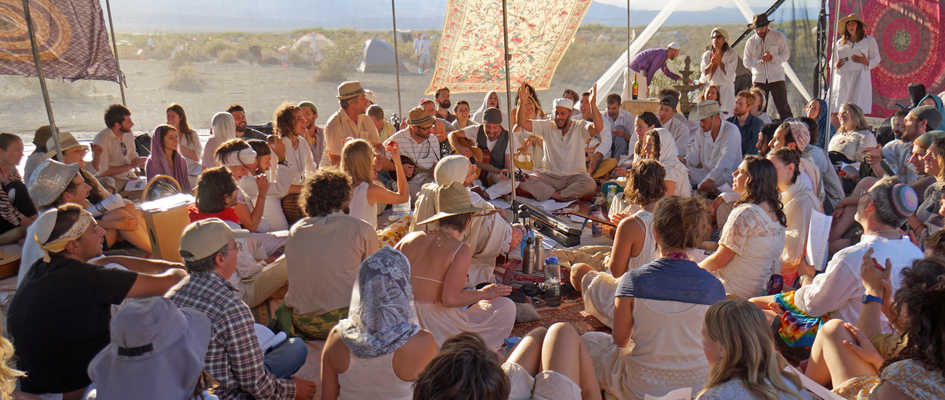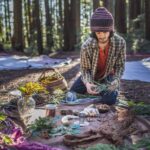by Daniella Aboody – Wilderness Torah, Berkeley California
Parsha Terumah and Passover in the Desert: The Holy Gift of Service
This week’s Torah portion is Terumah, which translates to “offering”, “gift”, or “contribution”. In this parsha, God instructs Moses to build the Mishkan (tabernacle), or the holy sanctuary, and the entire parsha of Terumah is a very detailed and specific set of instructions for how Moses and the Israelites are to make and furnish G-d’s dwelling place.
It is written: “Dedicate to G-d a contribution. Collect my offering from every person whose heart inspires him/her to generosity: gold, silver, and copper; blue, purple and crimson wool; linen and goat hair; arm skins dyed red, tachash skins, and acacia wood; oil for lighting, spices for the anointing oil and for the incense; precious gems…You shall place in the ark the testimony which I will give to you…I will meet you there and speak from between the angels. There, I will tell you what to command the Children of Israel.”
I find this parsha very intriguing – why are these instructions so particular? Is this all really necessary? For these nomadic people of the desert, such highly elaborate and specific requirements for the Mishkan are not easy to come by. And won’t this decadent physical structure be challenging to transport?
It seems impractical on the surface. Maybe even absurd. But at a deeper glance, it’s actually extremely beautiful. That amount of love, attention, care, and investment that will go into this offering to the Divine is powerful. It does not matter how long the Mishkan will be up for, or how improbable it may be to acquire these materials, or how precise the requirements are – it is -G-d’s dewlling place. The holy sanctuary, the most sacred space. It is the greatest gift one could possibly give. It deserves the best. It’s worth it. For the feeling you get when you are in the Mishkan, in the home of Oneness, especially after you have poured your heart into construction and decoration – it is truly ineffable. At the same time, it is not about you – it is an act of sacred service, a pure expression of prayer, gratitude and devotion.

(Photo by Mitchel Davitovitz, Tu B’Shvat in the Redwoods 2017)
At Wilderness Torah, we are currently deep in preparations for Passover in the Desert, ou annual pilgrimage festival to the Panamint Valley. The landscape is breathtaking, open, vast desert pressed up against a might mountain with hues of red, orange and purple. The land is comprised of dry sand, rocks and scattered creosote bushes, with no barriers between you and the elements. It is a real wilderness experience. And personally, there’s no other place I would rather be celebrating the story of the Jewish people’s liberation than in this remarkable place.
For months in advance, the Wilderness Torah staff and Community Leads work hard to organize and curate a transformative and connective experience of village at Passover in the Desert. Living as a village, although just for a week in space and time, we are able to transcend from community into family, to tribe and to a deep sense of belonging.

(photo by Jude Greenburgh, Passover in the Desert 2016)
When it’s finally time, we haul everything we need out from the Bay Area. We spend days raising and securing down our many structures – the tents of meeting and hearth; the healing hut, red tent and welcome tent; the kid’s tent, beit midrash, sanctuary and sacred fire space. We decorate them with drop cloths, tapestries, pillows, and more. Soon enough, the physical village is ready for participants to dwell in its space and commune with the Great Majesty.
Then, G-d-willing, the festival begins; connections are made, hearts are shattered open, sacred questions encountered…a profound experience is had by all. Everyone’s personal journey will be different, but all will be holy. For the tending of temples – our dwellings, our bodies, our communities – is a pathway to the sacred.

(photo by Jude Greenburgh, Passover in the Desert 2016)
This intricate, multi-dimensional and awe-inspiring operation that is Passover in the Desert is Wilderness Torah’s greatest contribution and offering to G-d. The spaces we create, the community we weave, the connections we build, the Oneness we experience – this is our Mishkan. It is complex, it is gorgeous, it takes effort to produce, it is impermanent, it is wild, it is a work of art, and it is sacred. It is our offering to G-d, to each other, and to ourselves.
Before we know it, the festival ends and it is time to break it all down. We express our deep gratitude and leave the land more pristine than we found it. we do our best to remember this moment, this feeling of connection, this truth. Just like that our Terumah and our holy service are complete.

(photo by Jude Greenburgh, Passover in the Desert 2016)
May we all be free to offer and express our full hearts in sacred acts of service; may the fruits of our labor bring forth beauty, depth and inspiration; and may we come together as a village to tend the holy spaces in our lives with care, intention and devotion.
We hope you will join us for Wilderness Torah’s Passover in the Desert this year! The festival will be held April 13-17 in the ever-so-sacred Panamint Valley, Southeastern California. With additional pre-festival first and second night sedars on April 10 and 11. If you feel motivated to participate in the sacred service of creating the village, special Avodah (work-trade) opportunities are available. More information can be found here – we hope to see you there!
Daniella is excited to be the JOFEE Fellow at Wilderness Torah, where she can integrate her passions for Earth connection, community building, youth empowerment and spiritual Judaism. Daniella has worked with Amigos de las Americas in rural Nicaragua, where she mentored youth volunteers, and coordinated community development projects centered on health & nutrition, education, girls' rights, the environment and economic development. She participated in the Urban Adamah Fellowship, where she discovered her deep love of sustainable agriculture and spirituality within the Jewish context. She then lived in Israel working in groundwater conservation at Friends of the Earth Middle East. Her passion for exploration led her to travel through the Pacific Northwest and Mexico, where she dove further into farming, yoga and meditation. Daniella earned her Bachelor's degree in International Development with a minor in Dance from UC Berkeley. She can be found dancing, playing in the kitchen or making art in her garden in Berkely, CA.
Editor’s Note: Welcome to D’varim HaMakom: The JOFEE Fellows Blog! Most weeks throughout the year, you’ll be hearing from the JOFEE Fellows: reflections on their experiences, successful programs they’ve planned and implemented, gleanings from the field, and connections to the weekly Torah portion and what they’ve learned from their experiences with place in their host communities for the year. Views expressed are the author’s and do not necessarily represent Hazon. Be sure to check back weekly!
